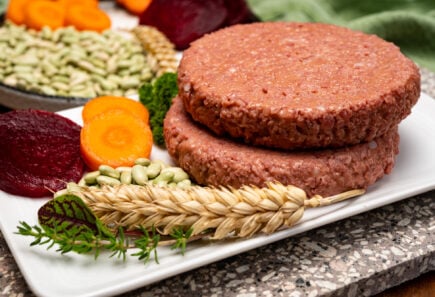
Deep dive: Plant-based meat end product formulation and manufacturing
This explainer focuses on crop-derived macromolecular ingredients, their applications in plant-based formulations, and protein texturization techniques.

This explainer focuses on crop-derived macromolecular ingredients, their applications in plant-based formulations, and protein texturization techniques.

The must-attend virtual event for any company involved in making the global food system more sustainable, kind, and fair for the planet, people, and animals.

This explainer surveys fractionation for extracting raw ingredients from crops, fractionation byproducts, and protein modification methods.

Learn about Dr. Burridge’s research to produce low-cost animal skeletal muscle cells at Northwestern University.

GFI's Claire Bomkamp speaks to The Scientist about the science behind cultivated meat, and its exciting potential.

Use this repository of helpful tools, templates, tips, and tricks to turn your university into an engine for alternative protein innovation.

This guide lays out the steps to build alternative protein courses and majors at your university.

This guide will give you the skills and tools to kickstart alternative protein research at your university.

Join Dr. Jess Krieger, CEO and Co-Founder of Ohayo Valley, to learn about her research and perspective on the cultivated meat industry.
Join us after the Science of Alt Protein seminar to network with alternative protein enthusiasts! During the networking session, you will be matched with other members of the GFIdeas community to exchange ideas.